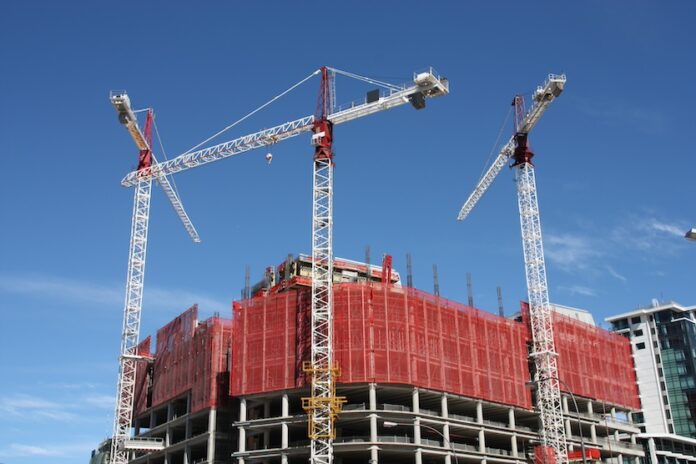According to the Rider Levett Bucknall (RLB) Forecast 107 report, New Zealand Trends in Property and Construction, Auckland’s construction activity continues to lead the way, driven by the city’s migration-led growth.
RLB director Grant Watkins says across the regions, Auckland continues to lead the way with construction activity.
“The increase in the value of construction work in Auckland, and to a smaller extent Waikato, contrasts with the contraction in other regions, including Wellington and Canterbury,” Watkins says.
“Auckland now makes up around 41% of nationwide construction activity (on a nominal basis).
“The concentration of new construction work in Auckland reflects the strong migration-led population growth the region has experienced. The production of ready-mixed concrete can provide useful information on broader construction activity, given it forms the foundation for most construction work.
“The latest data shows a decline in concrete production nationwide, reflecting broad-based softness across the regions, including Auckland,” he says.
Forecast 107 found that residential construction demand, and indicators such as dwelling consent issuance, point to weak demand for the coming year.
The annual number of dwelling consents issued fell further below 40,000 for the year to December 2023.
Fall in construction demand for stand-alone houses
The fall in residential construction demand has been broad-based across the building types, but particularly so for stand-alone houses.
This weak demand for stand-alone houses likely reflects the constraints due to a scarcity of centrally located land, and medium density development opportunities based on local authority district plan changes.
Other construction indicators also point to a weak near-term pipeline of construction activity. The NZIER QSBO architects’ measure of work shows architects continue to expect a decline in housing, commercial and government construction work over the coming year.
In line with recent consent issuance, expectations for the pipeline of housing construction are particularly weak.
BoP leads healthcare facilities growth
“The near-term outlook for construction is subdued,” Grant says.
“However, there are signs of an improvement in demand over the longer term. Non-residential consent issuance indicates a plateau in demand in Auckland, albeit at a high level.”
“Over the past year, the Bay of Plenty has led the growth in non-residential consent issuance, reflecting a stronger demand for healthcare facilities, as well as office and social buildings in the region,” he adds.
Te Waihanga, the New Zealand Infrastructure Commission, reported in its Infrastructure Quarterly for the September 2023 quarter 2, that infrastructure projects totalled almost $95 billion.
To the extent that proposed initiatives such as Auckland Light Rail and Lake Onslow projects were not at a stage with enough funding certainty for inclusion in the National Infrastructure Pipeline, the new government’s scrapping of these projects has no impact on the pipeline.
Large increase in value of infrastructure projects
The $2.8 billion increase in the value of infrastructure projects in the pipeline over the September quarter reflects a combination of new infrastructure projects, increases in the value of existing projects, and new contributors to the pipeline.
Transport water infrastructure makes up over half of this pipeline, and an estimated $42.7 billion of projects are under construction.
In terms of forecast infrastructure spending for the next five years, this is dominated by spending in the transport, water and social (including housing) sectors. Te Waihanga forecasts an annual spend of $14.3 billion for the 2023 year.
Drop in demand for office and education facilities
According to Forecast 107, a sharp drop in demand for new office buildings and education facilities over the past 12 months as led to a reduced demand for non-residential construction.
This has been offset to a slight extent by demand for alterations to office buildings. In contrast, there was stronger demand for new and alterations to social buildings, retail outlets and industrial buildings over the past year.
RLB expects that as households continue to reduce discretionary spending in the face of significantly higher mortgage repayments, demand for the construction of retail outlets will ease.
Over the longer term, we expect strong population growth, and the ageing population will support demand for new healthcare facilities.
Growth in non-residential
Over the past year, growth in non-residential construction consent issuance has been concentrated in the Bay of Plenty, Otago and Taranaki.
In the Bay of Plenty, growth in non-residential construction demand largely reflects stronger demand for the construction of healthcare facilities, office buildings, and social and cultural buildings.
Meanwhile, the growth in Otago has been driven by an increase in consent issuance for healthcare facilities and accommodation.
Strong recovery in international tourism activity is expected, with the reopening of international borders remaining a key support for the construction demand of new accommodation buildings in the region.
Increase in building costs now easing
During the Covid-19 pandemic, a shortage of labour and materials has driven a significant increase in construction costs, the effects of which are now unwinding as these supply constraints ease.
In line with the continued easing in capacity pressures in the construction sector, a further moderation in construction cost inflation from high levels over the coming year is expected.
RLB expects construction cost inflation to continue to ease over the coming years, reflecting the continued easing in capacity pressures in the sector.
Building sector firms report a continued easing in labour shortages and, in particular, unskilled labour is now easier to find.




